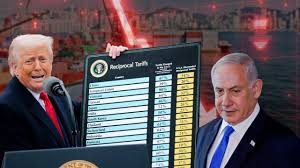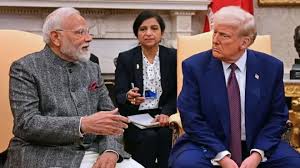President Donald Trump’s decision to reimpose and increase tariffs on dozens of U.S. trade partners has sparked economic uncertainty, diplomatic tension, and concern across global markets.
The new tariffs, ranging from 10% to 41%, are aimed at countries that the U.S. believes are not trading fairly. While Trump says the move is needed to “protect American jobs” and “fix trade imbalances,” the sudden changes are already creating serious challenges for global exporters, importers, and even everyday consumers.
Uncertainty for U.S. Trade Partners and all exporters in many countries are now unsure about the future of their trade with the U.S.
Countries like, India, Switzerland, Canada, Syria, and Myanmar face some of the highest tariffs, up to 41%, which may reduce or even halt exports to the U.S.
Australia and the UK, while facing a lower 10% tariff, are still affected and may be forced to renegotiate trade agreements.
This sudden shift is putting pressure on international governments and businesses to respond quickly or risk losing access to the U.S. market.
Their shall also be higher Prices for Americans, where these tariffs are not just a global issue—they hit close to home.
U.S. companies that import parts or finished goods—especially in industries like cars, electronics, steel, aluminum, and medicine—will likely raise prices to cover the new costs.
This means American consumers could soon pay more for everyday goods and small manufacturers that depend on affordable imported materials may also struggle.
More trade talks and diplomatic pressure, shall increase also and the U.S. government is using these tariffs as a bargaining tool. Countries that are already in talks with Washington are under pressure to sign deals before the August 7 deadline, when most of the new tariffs kick in.
Countries like Mexico was granted a 90-day delay after high-level talks.
Also countries like China are still negotiating, with threats of 30% tariffs looming if no deal is reached by August 12.
Some leaders see the strategy as **economic blackmail**, which could damage long-term relationships with the U.S.
Volatile Markets and Business Anxiety shall also come up and the sudden tariff announcement has already caused worry in financial markets.
Investors are concerned that higher trade barriers could lead to slower global economic growth and Companies may pause investment and delay hiring due to the uncertainty of future trade policy changes.
Retaliation and Legal Risks, where some countries are considering retaliating by imposing tariffs on American goods or taking legal action through the World Trade Organization (WTO).
A new wave of trade wars could begin, hurting global commerce and making diplomacy more difficult.
Global Supply Chain Disruptions
Modern products often involve parts from multiple countries, especially in Asia and Europe. New tariffs and rules will make it harder—and more expensive—to move goods across borders.
A new U.S. policy on “transshipped goods” (products moved between ports before arriving in the U.S.) could cause **shipping delays and customs confusion.
Who Wins and Who Loses? not all countries are treated equally under the new tariffs:
Countries like Japan, South Korea, the Philippines, and the UK—which reached early trade deals—face lower rates and are seen as stable trade partners.
And developing nations like Pakistan, Myanmar, Syria, and Laos are hit harder and have fewer options to respond.



